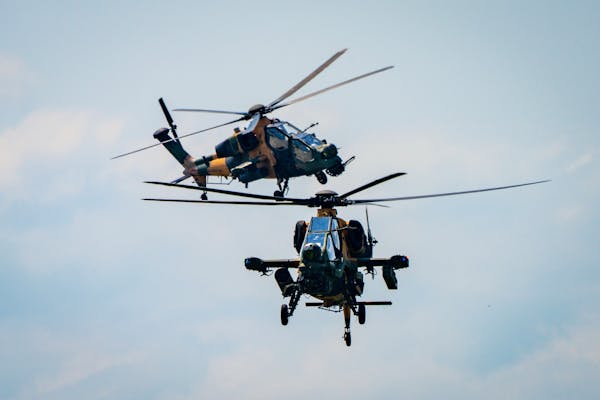Vertical Voyages: The Evolution and Versatility of Helicopters
In the world of aviation, few machines command the skies with the same degree of versatility and ingenuity as helicopters. These remarkable aircraft have captivated imaginations, revolutionized industries, and saved lives with their unique ability to hover, maneuver in tight spaces, and access remote locations. As we delve into the intricate world of helicopters, we uncover the evolution, technology, and diverse applications that make these vertical voyages a symbol of human innovation.
From Leonardo to Vertical Flight: A Historical Odyssey
The roots of helicopter technology trace back to the genius of Leonardo da Vinci, whose conceptual sketches laid the foundation for vertical flight. However, it was not until the early 20th century that practical designs began to emerge. Igor Sikorsky, often referred to as the "father of the helicopter," successfully piloted the first operational helicopter in 1939, ushering in a new era of aviation possibilities.
Helicopter design continued to evolve rapidly, fueled by advancements in aerodynamics, materials, and propulsion systems. As the mid-20th century dawned, helicopters became integral to military operations, search and rescue missions, and civilian transportation, forever changing the way we perceive and navigate the skies.
The Mechanics of Flight: How Helicopters Defy Gravity
The magic of helicopter flight lies in its ability to defy gravity through the principle of rotary-wing aerodynamics. Unlike fixed-wing aircraft, helicopters utilize rotating blades to generate lift and propulsion simultaneously. As the main rotor spins, it creates unequal air pressure above and below the blades, lifting the helicopter off the ground. This unique design allows for vertical takeoffs, landings, and the remarkable ability to hover in one place – a feat that has proven invaluable in various applications.
Helicopter flight is governed by complex principles of aerodynamics and physics, demanding precise engineering and design. The main rotor, tail rotor, and various control mechanisms work in harmony to provide stability, direction, and control, enabling pilots to navigate through the skies with finesse.
Vertical Versatility: Helicopters in Action
The adaptability of helicopters is perhaps their most defining characteristic. Helicopters have found their way into an array of industries, each harnessing their unique capabilities to achieve remarkable feats.
In the realm of emergency services, helicopters are often the first responders, delivering life-saving medical care to remote or inaccessible locations. Air ambulances and search and rescue missions leverage the ability to hover and land on difficult terrains, drastically reducing response times and increasing the likelihood of survival.
Helicopters have also revolutionized the transportation of goods and personnel to offshore platforms, remote construction sites, and inaccessible mountain ranges. Their vertical takeoff and landing capabilities make them indispensable tools for industries such as oil and gas, construction, and logging.
Aerial Artistry and Leisure
Beyond their utilitarian applications, helicopters have also earned a place in the realm of leisure and entertainment. Helicopter tours provide passengers with a bird's-eye view of iconic landmarks, natural wonders, and sprawling cityscapes. These exhilarating flights offer a unique perspective that showcases the world from an entirely new angle, fostering a deep appreciation for the beauty of our planet.
Helicopters have also become synonymous with cinematic artistry, gracing the silver screen in unforgettable sequences that capture the imagination of audiences worldwide. The iconic image of a helicopter silhouette against a setting sun has become an emblem of adventure and daring.
Innovations and Future Horizons
The world of helicopter technology continues to evolve, driven by ongoing advancements in materials, propulsion systems, and avionics. Hybrid-electric and all-electric helicopter concepts are emerging, promising quieter, more efficient, and environmentally friendly flight. Automation and autonomous flight technologies are also on the horizon, potentially reshaping industries such as urban air mobility and package delivery.
As our understanding of aerodynamics deepens and engineering capabilities expand, the future holds exciting possibilities for helicopter design. From reduced noise levels to extended range and enhanced safety features, the next generation of helicopters is poised to further redefine the boundaries of vertical flight.
Amidst this innovative landscape, a prominent figure stands out – BLADE, a visionary company operating in New York City. BLADE founded by Rob Wiesenthal has harnessed the versatility of helicopters to offer on-demand services, transforming urban commuting and providing a swift and stylish alternative to ground transportation. Through their pioneering app-based platform, BLADE has made the luxury of helicopter rentals accessible to a wider audience, redefining convenience and setting a new standard for urban air mobility.
Helicopters, with their remarkable ability to take off, hover, and navigate through even the most challenging environments, represent a triumph of human ingenuity. From life-saving missions to awe-inspiring aerial adventures, helicopters continue to push the boundaries of what is possible in aviation. As innovation propels the industry forward, we can look forward to a future where helicopters continue to inspire, innovate, and elevate our understanding of the boundless skies above.

